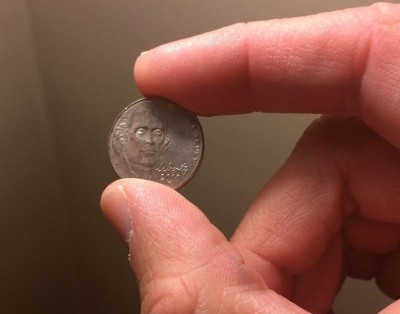3 Easy Ways to Damage the Value of Your Coins
You'd be surprised how often I see or hear of people doing things to their coins that will absolutely damage them. I mean flat-out knock 30% or more of the value off the coin. I'm not talking about drilling holes into the coins, colorizing them, or something else crazy like that. No -- I'm referring to things that to a non-numismatist seem benign but to seasoned collectors are downright damaging and possibly even catastrophic to coins and their value.
What are these things you should not do unless you want to lower the value of your coins (and permanently damage them, too)? Check them out below...
#1: Clean the Coin to Wash Away its Value
This one gets me every time. You have no idea how often I've heard somebody ask about the best way to clean their coins so they're "nice and shiny."
Here's the problem... Many people, especially those who are just getting acquainted with coins, like to look at them as if they're jewelry or antique cars. "Gotta buff it up so it looks nice and new," seems to be the thinking for some people when it comes to their coins. Washing a car or sonically cleaning jewelry might be just fine in those cases, but cleaning coins is not something that numismatists much appreciate. We want the coin in its original state. Not only does the toning help tell part of the coin's story, but the patina also helps protect the coin from its surrounding environment.
Besides, a cleaned coin doesn't look natural. I can usually tell a cleaned Morgan dollar from a mile away. I don't say that to sound like a self-touting braggart. What I mean is, I see them all the time, and I've long come to know what they look like. They're the ones that have been worn beyond having anything but the most basic detail in Miss Liberty's hair. But, by goodness, is that surface reflective! Sometimes, the coin is almost a dull, whitish-gray mirror. Sometimes my eyes aren't sure if they should look at the reflection of my face or the countless upon countless tiny hairlines all over the surface.
That's not what a well-worn Morgan dollar should look like. A Fine-12 or Extremely Fine-40 Morgan dollar should have some deep gray patina to it -- possibly lots of dark toning right around the lettering, date, and other devices. I should not be able to see my reflection in a worn Morgan dollar. Period.
Cleaning a coin strips away its patina and that can literally ruin the coin -- and its value. The best way to clean a coin? If it has loose grit and debris, rinse it under tepid water and pat dry (don't rub it) with a soft cotton cloth.
#2: Drop the Coin to Knock its Value Away
To drop a coin is a pretty egregious act in the eyes of most numismatists, but those less inclined to the study of coins sometimes seem to think nothing of dropping a coin. This can happen under a number of circumstance -- such as when dumping coins from a box onto a table, flipping the coin and letting it land on a hard surface (now, now -- we shouldn't be flipping numismatic coins, anyway), or simply dropping it upon a countertop or bar just to hear the coin's warm ring.
If you've ever seen rim dings, rim bumps, and rim bruises, you know what can happen to a coin if it is dropped. Normally, the larger and heavier a coin, the more likely it is to be damaged from a free-fall. Even letting gravity do its thing to a coin when it's over a soft surface is not a very good idea. If you're transferring your coins from, say, a box onto a table, it's best to simply pick the coins individually from the container and place them onto the surface you wish to view or display them.
Even one or two tiny nicks can significantly degrade a coin's collector value.
#3: Hold the Coin by its Obverse and Reverse to Diminish its Value
Many individuals unaccustomed to holding coins for anything but a sales transaction may not think a whole lot about pressing their forefingers and thumbs against the broadest surfaces of a coin. But we coin collectors know otherwise – that type of manhandling can ruin the surface of a coin and potentially lower the piece’s value.
Oils from our fingers as well as other debris can cause discoloration on coins, easily pushing their values down. That’s not even to mention the damage that could be caused to the coin’s overall eye appeal from fingerpints, smudges, and other ugliness.
So, what’s the best way to hold a coin? By grasping its edge with your thumb and forefinger, such as in this post's main photo. The goal is to leave the obverse and reverse completely untouched. This minimizes damage to the coin and also allows you to view the entire front and back surfaces of the coin.

